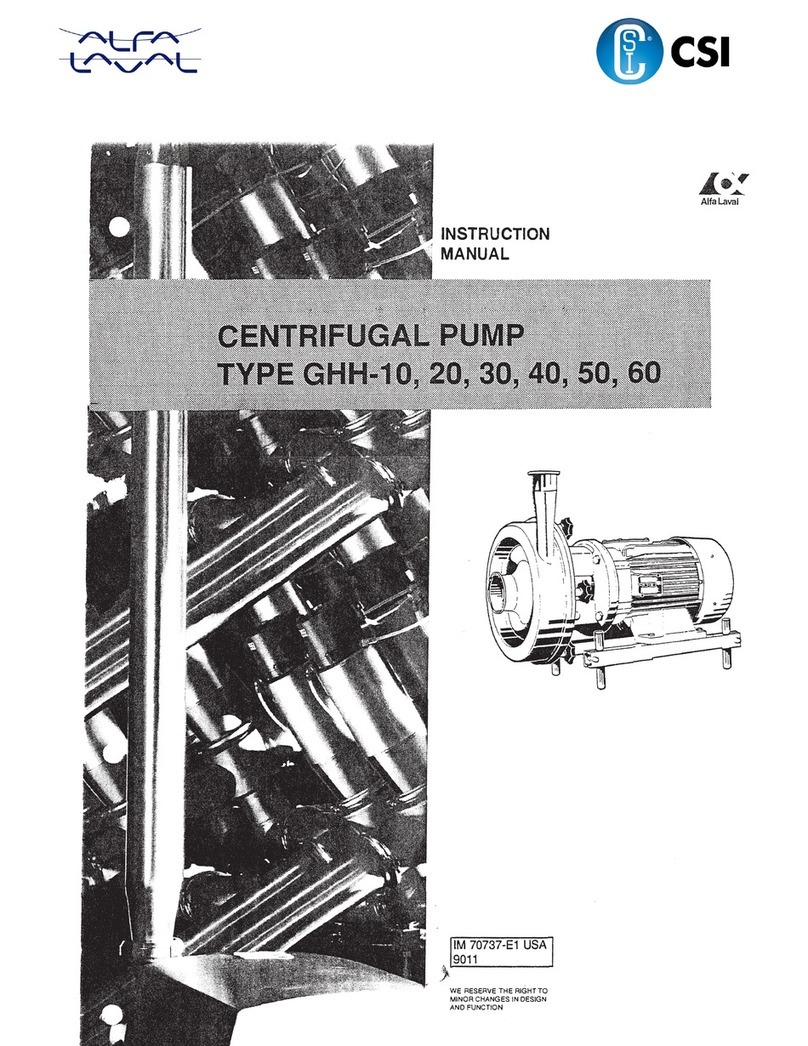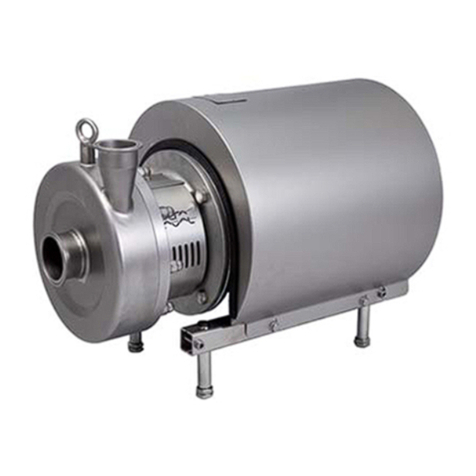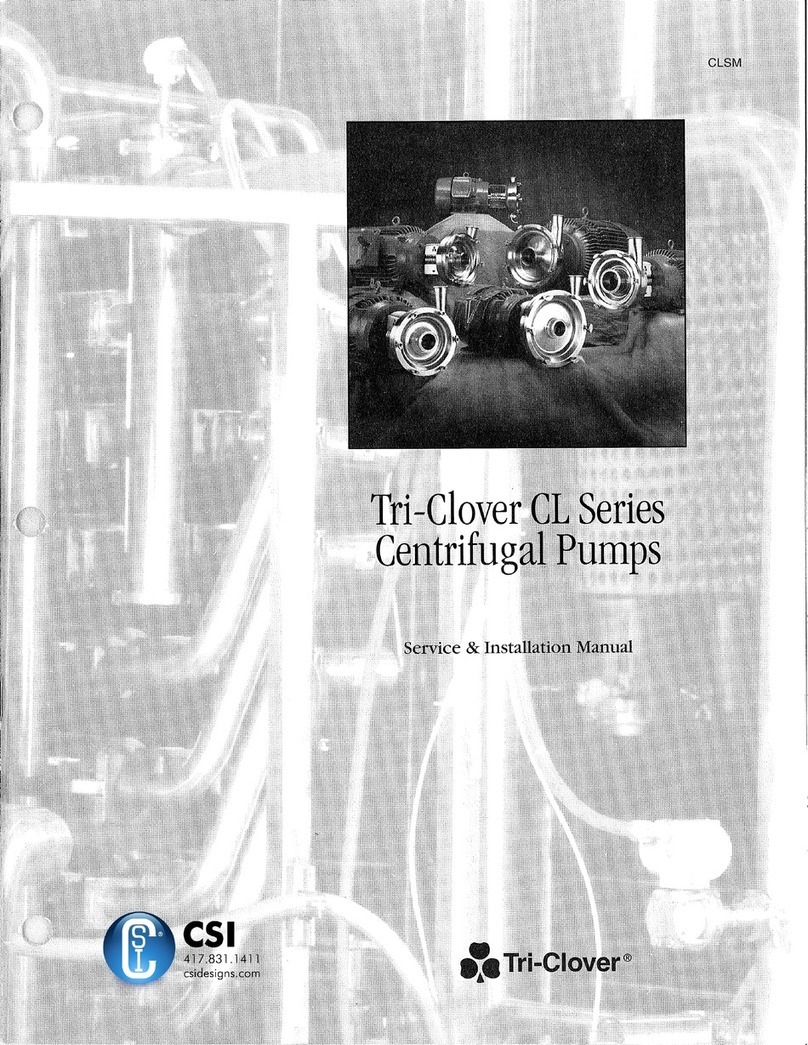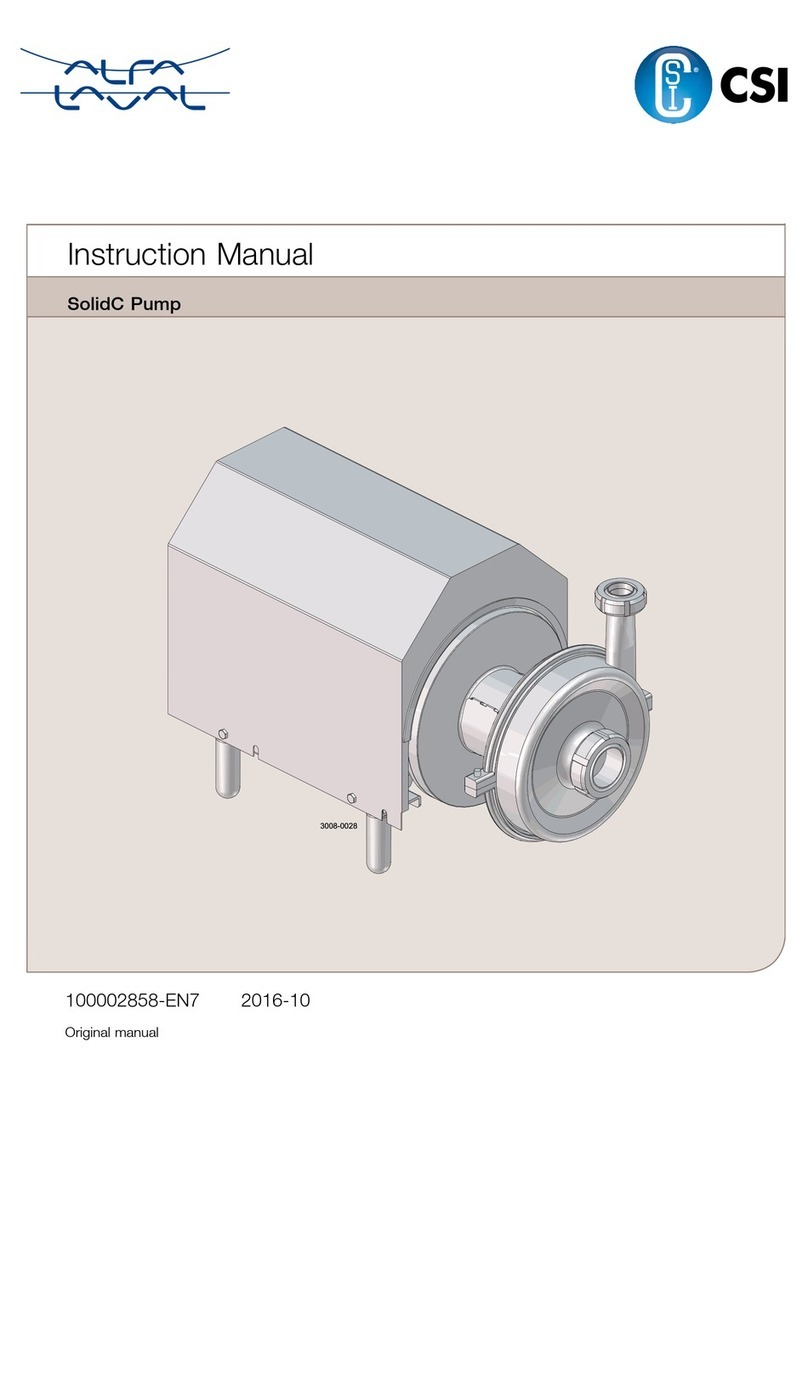
3© Gamajet Cleaning Systems, Inc. 10/24/01
connected to the drain to suck out the wash fluid as fast as the Gamajet is putting
it in. In extreme cases, it may be necessary to mount smaller nozzles on the
Gamajet, or even to operate it intermittently to allow time for draining.
1.2.7 FILTERS OR STRAINERS
All tank cleaning systems should be equipped with a filter or strainer that will trap
solids 1/16" or larger, as these will not pass through the Gamajet. These large
particles will not harm the machine, but they can become caught in the turbines or
nozzles and cause it to stop turning or to reduce its cleaning effectiveness due to
loss of flow. It will then be necessary to disassemble the Gamajet and remove the
blockage.
In recirculating cleaning or any other application where the cleaning solution may
carry abrasive solids in suspension, adequate filtration is a must. These particles
can be extremely destructive to the Gamajet, as well as pumps, valves, and other
system components. Filters, properly installed and maintained, will more than pay
for themselves with lower overall operating costs in these applications.
Furthermore, to ensure that clogged filters or strainers are cleaned, we recommend
that you use automatic self-cleaning models.
1.2.8 CAPACITY OF SUPPLY PUMP
The Gamajet V should be sized to match the pressure and flow capability of the
supply pump at its best efficiency point (BEP). For example, if the pump is rated
for 23 GPM at 250 PSI, then the nozzles for the Gamajet V must be configured
for the same 23 GPM at 250 PSI. If not, then you will increase the probability of
experiencing premature failure of Gamajet V parts as well as shaft seals on the
pump the farther away from the BEP that you operate the pump. You may void
the Gamajet V warranty.
For high-pressure applications (over 300 psig), the pump must “ramp up”
slowly (at least 15 seconds) to its operating pressure. If the pump goes from a
standstill to operating pressure in about 1 second or less and if there is no
dampening or slow-opening valve between the pump and the Gamajet, you will
experience premature failure of Gamajet V parts (most likely, certain gears). This
is because of a water hammer effect or a pressure spike.
1.3 SAFETY
When Gamajets are operating, there should be covers over any tank openings. These
covers should be sealed well enough to withstand the full force of the jet striking the
cover plate. If the cleaning solution is hot, corrosive, or toxic a leak would present a
serious hazard to any personnel in the immediate vicinity or to any exposed electrical
equipment.































